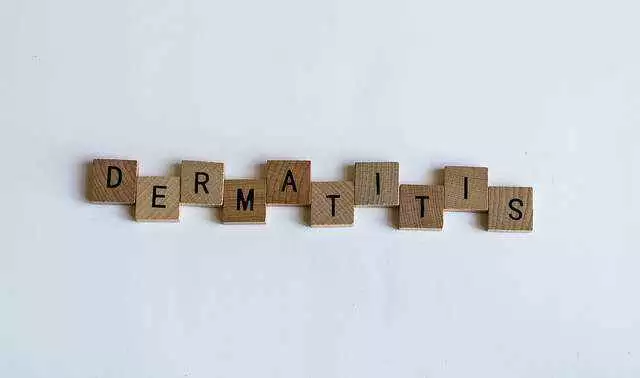
Celiac.com 03/02/2018 - When I was diagnosed as having celiac disease with severe dermatitis herpetiformis (DH) I was told that the diet was difficult to follow and I would have to be vigilant or Dapsone would not relieve the itching. I suffered abdominal pain, outbreaks of sores, anaemia, and, (big swallow) the horrible bowel disorders. I came out of the dermatologist's office with a prescription for Dapsone to treat the attack of sores on my scalp, on my arms and thighs, along with a slip of paper referring me to the dietician at our local hospital. But that was years ago. My journey has been an ongoing trial of trial and error.
I was just discharged from hospital again, my third occasion in ICU within the past year. I have been told I am the only person in Langley who can wear that crown, the one of having Methemoglobinemia. {lucky me!}
Celiac.com Sponsor (A12):
This could happen to any celiac with dermatitis herpetiformis who takes Dapsone. And anyone regularly eating packaged meats or bacon, for instance, along with having Zylocaine injections, is at significant risk of methemoglobinemia as well. A person with celiac disease may or may not have dermatitis herpetiformis. Many celiacs go their entire lives without a DH spot on their bodies {you Lucky people}.
I have learned a lot in this past two weeks, both while hospitalized and from subsequent research, about the reasons it happened and the dangers of it happening to me again. I can never have more than one Dapsone again and I must now have methemoglobinemia tests done every six weeks. It is likely that they cannot use Methylene Blue to treat me again, unless I am at a critical point, because of the danger of the poison still being in my system.
**A little lesson here on methemoglobinemia:
Hemoglobin is the molecule in red blood cells that distributes oxygen to the body.
Methhemoglobinemia can either be inherited or acquired. It is a blood disorder in which an abnormal amount of methemoglobin, a form of hemoglobin, is produced. Methemoglobin cannot release oxygen.
There are two forms of Methemoglobinemia. The acquired form is caused by exposure to some chemicals and/or drugs and is thought to be more common than those that are inherited.
Chemicals and drugs that trigger methhemoglobinemia include:
- Anaesthetics such as benzocaine and Xylocaine
- Benzene
- Certain antibiotics {including Dapsone and chloroquine} Moi!
- Nitrites {used as additives to prevent meat from spoiling)!!
There are two sub-groups of inherited methemoglobinemia, type 1 and type 2.
The symptoms of acquired methemoglobinemia include:
- bluish coloring of the skin
- headache
- fatigue
I did not get "bluish coloring of the skin", even though I was hospitalized on three occasions with this condition and was asked about it repeatedly. I did get full frontal, severe headaches, and I did experience breathlessness when climbing stairs. I had to stop at the top of our the stairs in our home to catch my breath. My most recent admission to the Emergency Department was after such an experience. I was really out of breath, had chest pain, and my headache was so severe that I told my husband that I thought that methemoglobinemia was coming back again.
I made the mistake of following a physician's instructions - some don't seem to know that this condition can become critical.
The admissions last year were because I had two of the diagnostic criteria for Type II methemoglobinemia. I had a trapped nerve in my neck and my husband had been trained to give me Zylocaine injections to alleviate severe stabbing pains just above my right eyebrow. (The nerve travels over the head to just above the eye.)
I had been told that when I was in the throes of a dermatitis herpetiformis outbreak I could go 5 - 4 - 3 - 2 - 1 with Dapsone and Prednisone. On the first day I took 5 tablets, the second day 4 tablets, and so on. If the spots kept re-occurring then I was to follow the same procedure once more.
When I was discharged last year I was not told to change that protocol. In February, I found myself inundated with dermatitis herpetiformis spots all over the back of my head, backs of my arms and shins. I was conservative in my approach to Dapsone and took only Three Dapsone tablets on two successive days.
This set me on the path to another hospital admission. I could not climb our stairs without leg pains and becoming breathless. I had frontal headaches and just "did not feel well".
On one of my last admissions to the intensive care unit, my methemoglobinemia was 29 and the Internist treating me said that if I had sat at home with my oxygen bottle for another week my methemoglobinemia scale could have climbed to 35 which usually means death.
What to do if you develop the same symptoms: Call your health care provider or emergency services (911) immediately if you have severe shortness of breath and you have previously experienced methemoglobinemia.
Prevention: Genetic counseling is recommended for couples with a family history of methemoglobinemia who are considering having children.
After this most recent outbreak of DH I was determined to find out what had caused this last admission to hospital. It was not fun to have my blood drawn daily. Neither was it fun to have the phlebotomist coming in to draw blood gases from my wrist (ouch!) also daily. It was scary when they told me that my hemoglobin was declining daily and when it hit 80 they started the IV drip of two units of packed red cells again.
They did not do the Methylane Blue flushing during this admission because my methemoglobin was 11, not 17 or 29. Methylane Blue is a poison and they had to check with St. Paul's Hospital in Vancouver in order to determine the amount to be used on this little body. Plus they cannot keep doing this poisonous flushing every nine months. I was told this by a specialist wearing his sternest facial expression, obviously in order to scare me.
Who knows what amounts still stay in the system? Methylene blue may be dangerous to patients who have or may be at risk for a blood disease called G68PD deficiency and should not be used by them. If you or your child has G6PD deficiency, always tell your health care provider before receiving treatment.
Another interesting note is that ascorbic acid can also be used to reduce the level of methemoglobin. I don't know much ascorbic acid is required but I intend to find out. Oranges contain ascorbic acid do they not? The normal methemoglobinemia scale is about minus 0.1. Mine seems to stay at about 3.
This specialist physician also told me that I could no longer increase my dosage of Dapsone. It has to stay at one per day no matter how severe the outbreak. I must also take Cimetidine, a drug that is usually used to control excess stomach acid. It helps to reduce the impact of Dapsone on methemoglobin.
Dapsone is the dangerous drug for methemoglobinemia, and Zylocaine injections also pose similar dangers. After my admission to hospital last May, I found out that phosphates can also add to the level of methemoglobin. There are phosphates in packaged meats, with lots of those little guys in bacon and cured ham. Were I to double up on Dapsone because of a particularly bad DH outbreak, have a few injections of Zylocaine, then add some back bacon and packaged cold cuts, I might well be back in hospital with elevated levels of methemoglobin.
This time I also discovered that phosphates are sometimes in chewing gum, malted milk drinks, drinking chocolate, baked beans, instant coffee, curry powder, white pepper, some lipsticks, gravy browning, self basting turkeys, brown rice syrup, supplements and, of course, luncheon meats.
Fifteen years ago I was told I could use Atarax for the itch. Now they tell me that this drug is not only very sedating, thus slowing the heart down considerably, it is a poison that can cause tardive dyskinesia, a potentially irreversible form of brain damage. Again, fifteen years ago it caused me to experience facial gesticulations, tongue protrusion, hands that trembled and a speech pattern that often defied translation. That was because I was wrongly prescribed Loxapine for the itch, and along with Atarax, it ruined my life forever.
Misunderstandings persist. Celiac disease can look like Crohn's disease. It can look like colitis. It can look like irritable bowel disease, and because physicians have been taught that celiac disease is very rare and they often simply write it off as irritable bowel syndrome when they cannot find the cause of a GI problem. They forget that it could be celiac disease. It is just under-diagnosed, and peri-menopausal women suffer the most because they are often labeled as "depressive", or worse yet, "neurotic". I was told when working as a nurse that "irritable bowel" often meant "we just don't know".
The world has yet to define a universal "gluten-free" standard. For international trade purposes, the Codex (WHO - World Health Organization), Committee on Nutrition and Foods for Special Dietary Uses is in the process of revising their standards. At this time they are unable to reach a consensus. {Hey, this has been since 2008 and it's already 2012! What do they do at these Forums?} The Food Allergen Labeling and Consumer Protection Act (FALCPA) has committed to defining "gluten-free" for labeling purposes by 2008. We still do not have a World standard. FDA (Food and Drug Administration) acknowledges that the situation needs to be rectified and it has made a start by including gluten with other major allergens in their ingredient disclosure requirements.
The greatest progress is among the health declarations on restaurant menus and whole foods markets. Wal-Mart have also cast their lot with this group, establishing entire sections dedicated to gluten-free foods. We are finally starting to get rid of ‘stealth glutens' - those in flavor carriers, binders, fillers and emulsifiers, and used in everything from salad dressings to self-basting turkeys. We have come a long way, but we still have miles to go in reforming the food industry. As a waiter said to my friend when she told him she has celiac disease: "We don't serve fish in our restaurant, in fact we have nothing out of the sea".
References:
- DeBaun, MR - Frei-Jones M Vichinsky E Hereditary methemoglobinemia in Kliegmann RM, Behrmann RE, Jenson HB, Stanton BF, eds. Nelson Textbook of Pediatrics 19th ed. Philadelphia.
- PA Saunders, Fernandez Frackelton M Bocock, J. Cyanosis In: Marx JA, Hockberger RS, Walls RM, et al, eds. Rosen's Emergency Medicine Concepts and Clinical Practice 7th ed. Philadelphia, Pa, Mosby Elsevier; 2009, chap, 29.
- "Keeping Food Safety in the Mix: Food Safety in Grain Based Foods and Bakery Products" Gluten-Free Formulation, Kim Decker










Recommended Comments
Create an account or sign in to comment
You need to be a member in order to leave a comment
Create an account
Sign up for a new account in our community. It's easy!
Register a new accountSign in
Already have an account? Sign in here.
Sign In Now